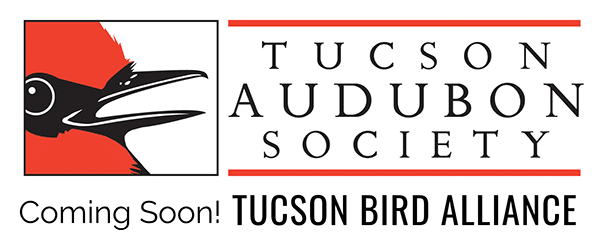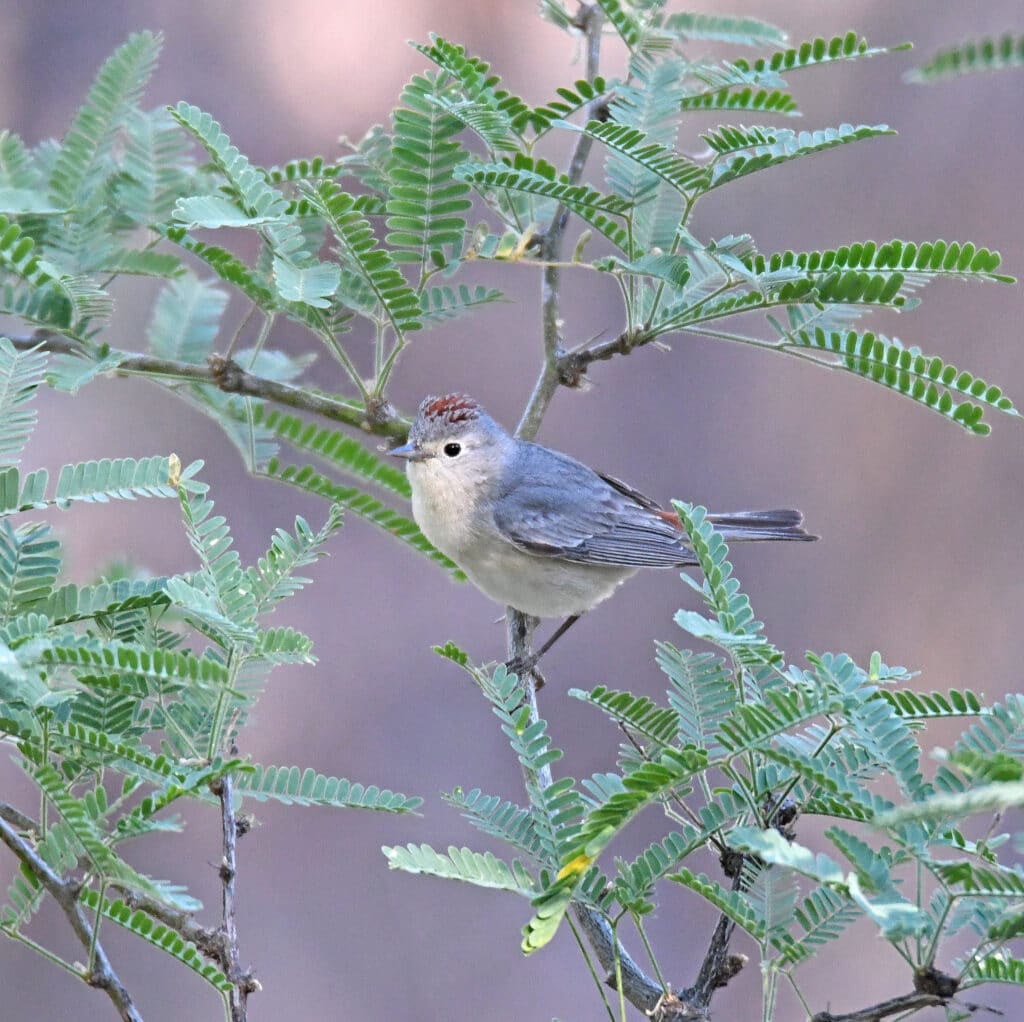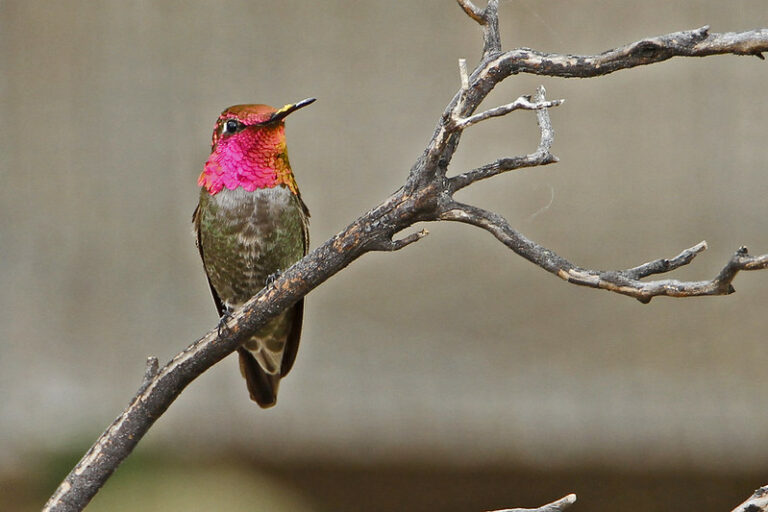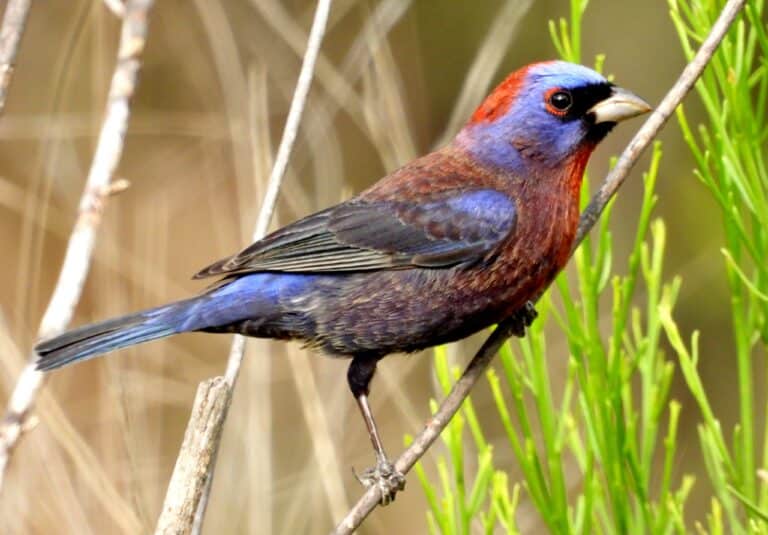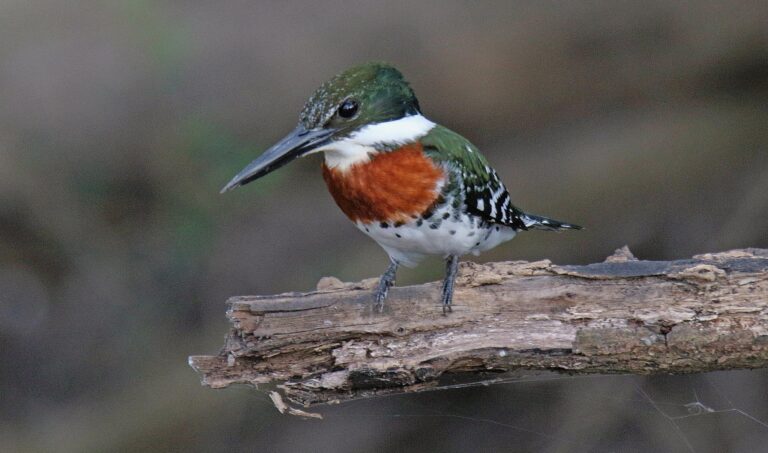Bird watching is an auditory experience as much as a visual one, more so sometimes, as we all know how some species like to stay hidden. Spring means the arrival of Lucy’s Warblers in urban Tucson, signaling the start of a new birding season. One is usually alerted to them by hearing a bird sing long before ever seeing it. It’s not that these little gray birds with the inconspicuous rusty red rumps and head patches are that difficult to see, they just sing constantly and loudly once back from their wintering grounds along the western Mexico coast. It’s no surprise, this smallest of our New World warblers nests in some of the densest concentrations of any non-colonial species (up to 5 pairs per acre), so they must act quickly and steadfastly to set up and defend their territories. They nest in the most arid habitats of any North American warbler: the mesquite bosques and adjacent riparian forests of Arizona and New Mexico. Also known as the “mesquite warbler” and “desert warbler,” Lucy’s Warblers are one of only two warblers that nest in cavities (Prothonotary Warbler being the other). They use Gila Woodpecker holes, old Verdin nests, and all manner of tiny spaces (I once found a nest in the joint of a wood fence in Catalina State Park!), but by far they prefer to nest in natural cavities and the loose bark crevices of our native velvet mesquite trees.
Lucy’s Warbler is threatened by the loss of riparian habitat and mesquite bosques and is listed as a Species of Conservation Concern by Arizona Game and Fish. To counteract these losses, Tucson Audubon has innovated a triangular nestbox design that mimics the shape of real-world mesquite bark nests and has initiated a program to get them out into local areas. Help give Lucy’s Warblers additional nesting opportunities around Tucson by putting up a box in your yard—before the birds come back! Nestboxes can be purchased at our Nature Shop, online or in person.
